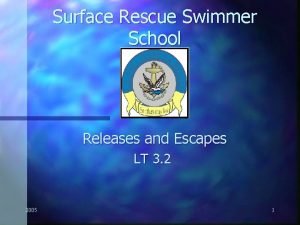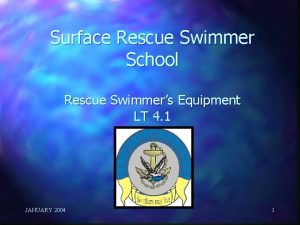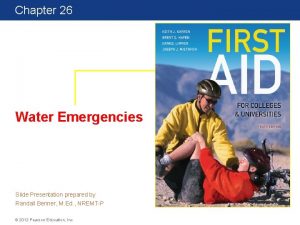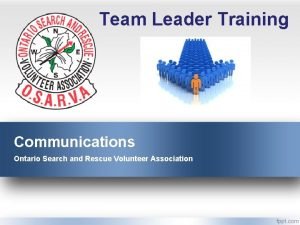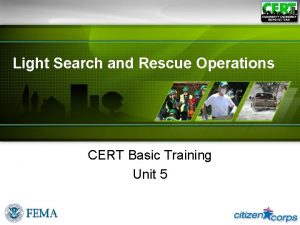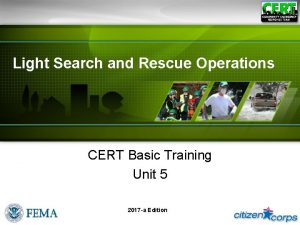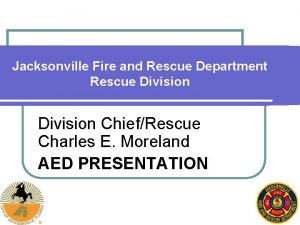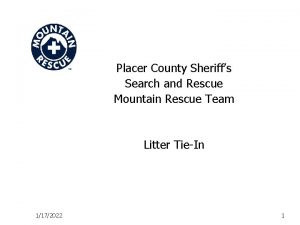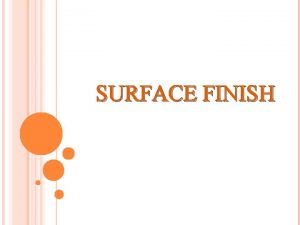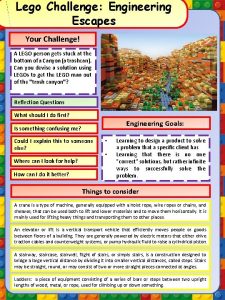Surface Rescue Swimmer School Releases and Escapes LT


































- Slides: 34

Surface Rescue Swimmer School Releases and Escapes LT 3. 2 2005 1

Enabling Objectives List procedural steps for rescue swimmer head hold releases and escapes in accordance with NTTP 3 -50. 1 series. n Demonstrate rescue swimmer head hold releases and escapes in a simulated rescue situation in accordance with NTTP 3 -50. 1 series. n 2005 2

Releases and Escapes NOTE If caution is used and approaches are done correctly, these procedures should not have to be used. Releases and escapes are taught as a precaution. 2005 3

Releases and Escapes To allow rescuer to escape grasp of panicking survivor. n Remember that a panicking survivor will do anything to ensure he keeps his head above water. The key to these techniques is that the rescuer submerges deeply enough that the survivor goes underwater. n 2005 4

Releases and Escapes n A properly performed escape will simply free the rescuer from the grasp of the survivor and require a re-approach; a properly executed release will result in the release of the survivor’s grasp while the rescuer remains in control. 2005 5

Front Head Hold Release n 2005 Suck- take a quick breath of air. 6

Front Head Hold Release n 2005 Tuck- tuck chin down and to the side. 7

Front Head Hold Release n 2005 Duck- Rescue swimmer extends arms outward, palms up, moving them upward rapidly several times which produces downward movement, and submerges the survivor and swimmer. 8

Front Head Hold Release n If the survivor’s head is on the right of the rescue swimmer’s head, rescue swimmer brings right arm up and over encircling arm and places hand securely against survivor’s right cheek, the little finger against the side of survivor’s nose and thumb hooked under the jaw. 2005 9

Front Head Hold Release NOTE If survivor’s head is at the rescuer’s left side, the method is reversed. 2005 10

Front Head Hold Release n The remaining hand is brought up beneath the survivor’s other arm seizing it in a grip with the thumb just above the elbow on the pressure point. 2005 11

Front Head Hold Release n In one continuous motion, the survivor’s head is pressed out and around with the right hand while the left hand is lifting the survivor’s arm over the rescue swimmer’s head and sweeping it across the far side. 2005 12

Front Head Hold Release n 2005 This is a pressing movement and it is continued until the survivor’s back is to the rescuer. 13

Front Head Hold Release n The left hand continues to hold the arm until the right hand can be shifted from the survivor’s face to the chest, and the survivor is brought into a controlled cross-chest carry. 2005 14

Front Head Hold Release NOTE If survivor’s head is at the rescuer’s left side, the method is reversed. 2005 15

Front Head Hold Release n If survivor places a scissors lock on the rescue swimmer with the legs, the scissors lock is rarely held after the head hold is released. However, if it is not released the rescue swimmer uses one hand between the ankles to unlock the crossed feet. 2005 16

Front Head Hold Escape SUCK TUCK DUCK 2005 17

Front Head Hold Escape n Without pause, the rescue swimmer places both hands on the front of survivor’s hips with the heels of the hands against the body, fingers extended and thumbs grasping the survivor’s sides. 2005 18

Front Head Hold Escape n By forcefully pressing and extending the arms, the rescue swimmer pushes the survivor’s body back and up toward the horizontal position. This leverage will loosen the survivor’s grasp. 2005 19

Front Head Hold Escape By tucking the chin inward and hunching the shoulders, the rescue swimmer’s head is freed. Survivor is then pushed away. n Rescue swimmer surfaces to reassess the situation. n 2005 20

Rear Head Hold Release SUCK TUCK DUCK 2005 21

Rear Head Hold Release Rescue swimmer places both hands on survivor’s wrist either top or bottom, and. . . 2005 22

Rear Head Hold Release pulls toward rescue swimmers hips, . . . 2005 23

Rear Head Hold Release …rotating the hand sliding the other hand up to the survivor’s elbow 2005 24

Rear Head Hold Release n By twisting inward and down on the suvivor’s wrist and pushing the survivor’s elbow upward, the grip is released. Rescuer slides survivor over his/her head until the survivor is in front of the rescuer with the survivor’s forearm straight across survivor’s back and survivor is in front of rescue swimmer. 2005 25

Rear Head Hold Release n From this position behind survivor, rescue swimmer shall release grip on the elbow while maintaining control of the wrist, reaching over the survivor with the free hand then place survivor in a controlled crosschest carry. 2005 26

Rear Head Hold Escape SUCK TUCK DUCK 2005 27

Rear Head Hold Escape n Rescue swimmer brings hands up to under side of each of the survivor’s elbows. 2005 28

Rear Head Hold Escape While keeping chin tucked in and hunching the shoulders, rescue swimmer pushes forcefully upward freeing the head. 2005 29

Rear Head Hold Escape n 2005 Survivor is then pushed back away. Swimmer turns to face survivor, prepared to prevent subsequent grasps. 30

Rear Head Hold Escape n Rescue swimmer swims well out of reach of survivor, surfaces, and decides which rescue procedures to use. 2005 31

Summary n Why do rescue swimmers need to know releases and escapes? n To allow rescuer to escape grasp of panicking survivors. n What is the first thing a rescue swimmer should do in the event a survivor grabs him/ her? n Suck, Tuck, and Duck 2005 32

Summary n After a rear head hold escape or a front head hold escape, what should the rescue swimmer do? n Reassess the situation n Why should the rescue swimmer utilize a control cross-chest carry? n So that the rescue swimmer remains in control. The survivor is active. 2005 33

Summary n Why is hand placement necessary during releases and escapes? n So that the use of pressure points are utilized. 2005 34
 Surface rescue swimmer school
Surface rescue swimmer school Front head hold escape
Front head hold escape Rescue swimmer wetsuit
Rescue swimmer wetsuit Basic model of motivation
Basic model of motivation Squid use jet propulsion for rapid escapes
Squid use jet propulsion for rapid escapes Reach throw wade row swim tow
Reach throw wade row swim tow Cellular respiration releases
Cellular respiration releases Cellular respiration releases
Cellular respiration releases Cisco network insights advisor
Cisco network insights advisor Which structure releases glucagon
Which structure releases glucagon The yucca plant releases a strong scent at night
The yucca plant releases a strong scent at night The yucca plant releases a strong scent at night
The yucca plant releases a strong scent at night You wouldn't tell anyone question tag
You wouldn't tell anyone question tag A swimmer has dropped her goggles
A swimmer has dropped her goggles A swimmer has dropped her goggles
A swimmer has dropped her goggles A swimmer swims 20m in 40s
A swimmer swims 20m in 40s Swimmer plot sas
Swimmer plot sas Swimmer detection
Swimmer detection Female swimmer diet
Female swimmer diet Lawn allow drawing swimmer
Lawn allow drawing swimmer Ingrid is a good swimmer. she ____ swim for hours
Ingrid is a good swimmer. she ____ swim for hours A daring 510 n swimmer dives
A daring 510 n swimmer dives America's champion swimmer gertrude ederle
America's champion swimmer gertrude ederle Swimmer itch
Swimmer itch Wet curved surface area
Wet curved surface area How to find the lateral surface area of a rectangular prism
How to find the lateral surface area of a rectangular prism High surface tension vs low surface tension
High surface tension vs low surface tension Search and rescue radar transponder
Search and rescue radar transponder Search and rescue aircraft signals
Search and rescue aircraft signals Types of drowning
Types of drowning Ontario search and rescue volunteer association
Ontario search and rescue volunteer association Urban search and rescue markings
Urban search and rescue markings Light search and rescue operations
Light search and rescue operations Light search and rescue
Light search and rescue Pierce county search and rescue
Pierce county search and rescue

